methods
The
first step
in our approach is to model a docking structure. Modeling the
dock
structure
comprises of utilizing circular and rectangular obstacles within an
open channel simulator. Waves will be
created manually while maintaining a constant period.
Determination
of wave energy will be analyzed by measuring the wave height in front
of a scaled, black and white grid. Based
upon the calculated wave length and observed wave
height, energy can be found.
However,
for physical
modeling, there are certain similitude requirements:
-
Geometric similarity (linear dimensions)
-
Kinematic similarity (motion between particles)
- Dynamic similarity (vectorial
forces)
Perfect similitude requires that
the prototype-to-model ratios of the inertial, gravitational, viscous,
surface tension, elastic, and pressure forces be identicl.
Fortunately, inertial and gravitational forces are dominant relative to
the others, which makes modeling much easier.
The following is a schematic of the apparatus:
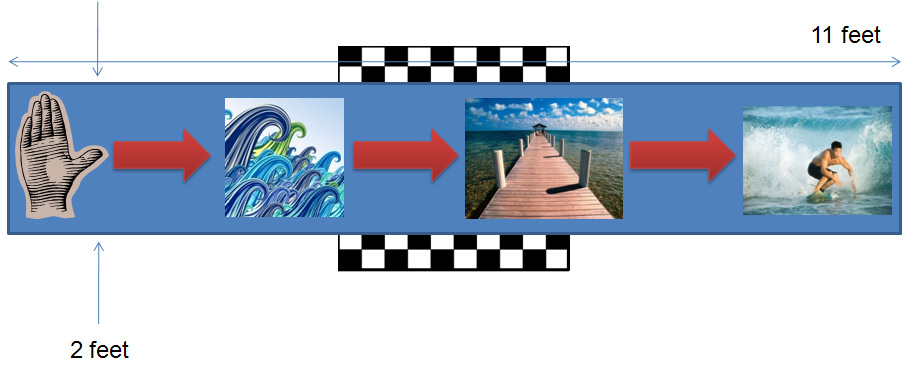
As
shown, waves are first generated by hand. As the incident wave
propogates throught the open channel simulator, it passes the objects
put in place to simulate a docking structure.
Objects
utilized: 4x4 inch rectangular wooden support,
orthogonal to flow
4x4
inch rectangular wooden support, oblique to flow (45 deg)
4 inch diameter cylindrical aluminum support
4 inch diameter cylindrical aluminum support (1.5 inch)
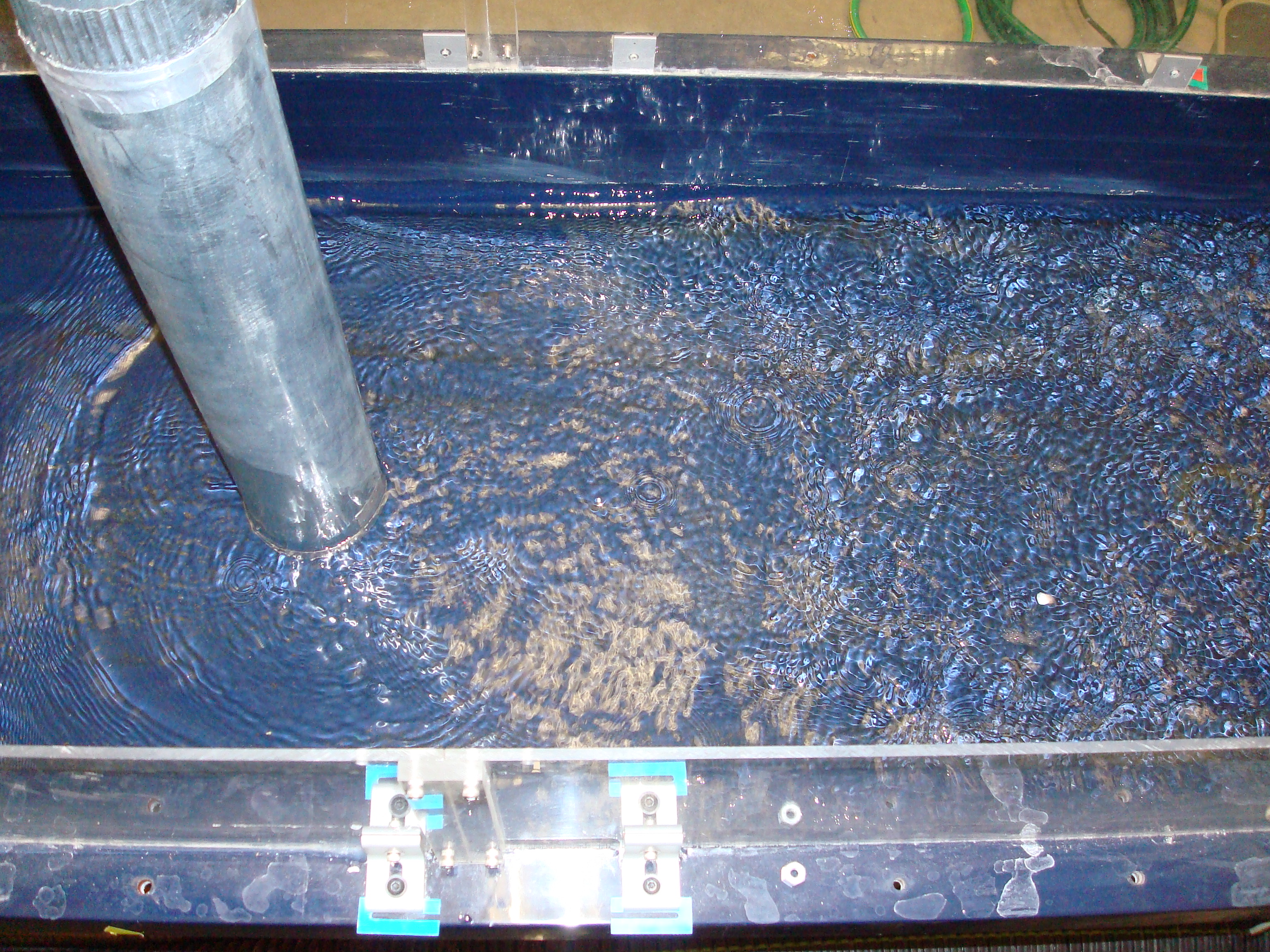
4 inch diameter cylindrical aluminum support (4 inch)
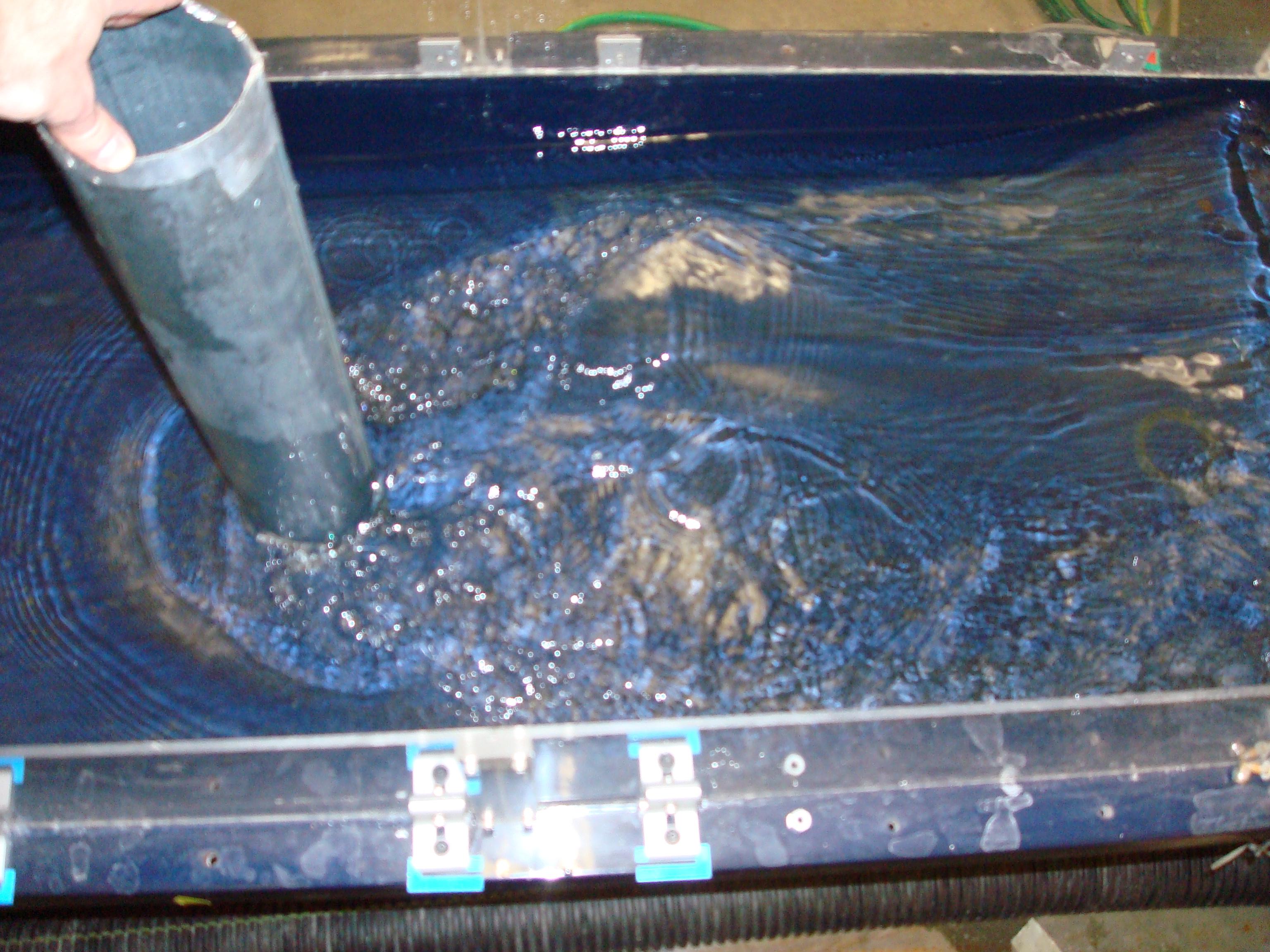
4 inch diameter cuylindrical aluminum support (6 inch)
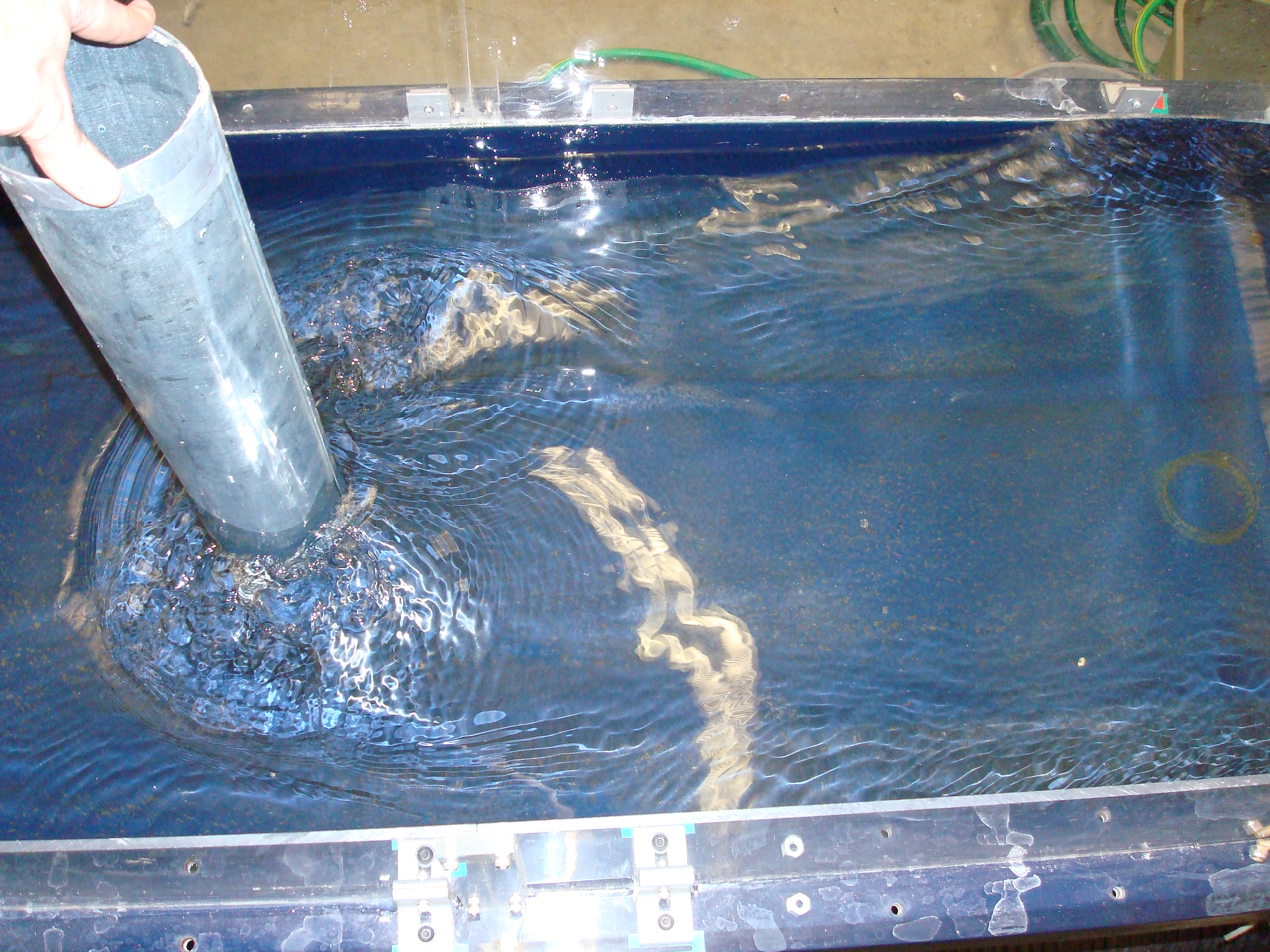
4x4 inch rectangular wooden support, oblique to flow (45
degrees): 1.5 inch
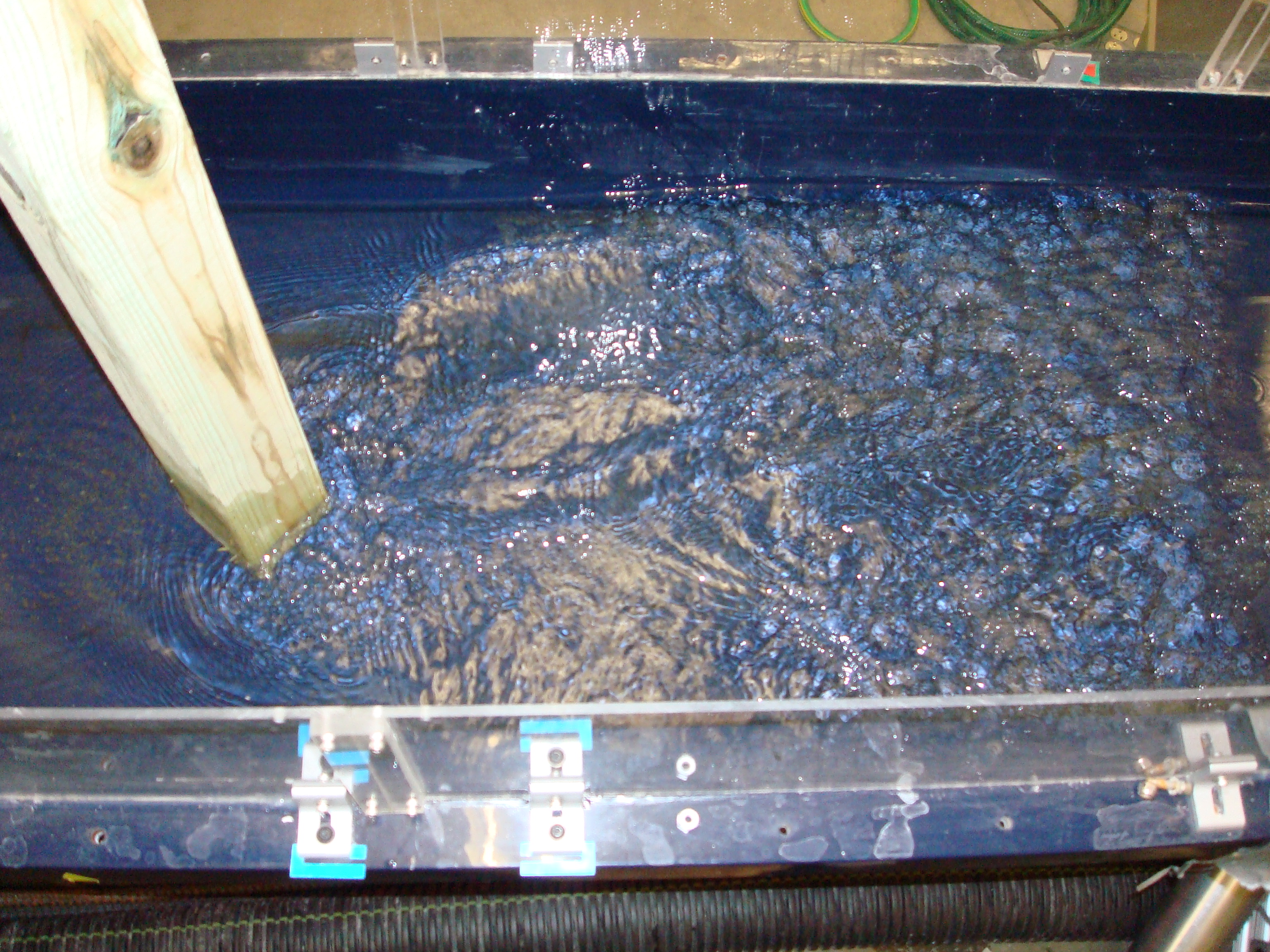
4x4
inch rectangular wooden support, oblique to flow (45 degrees): 4 inch
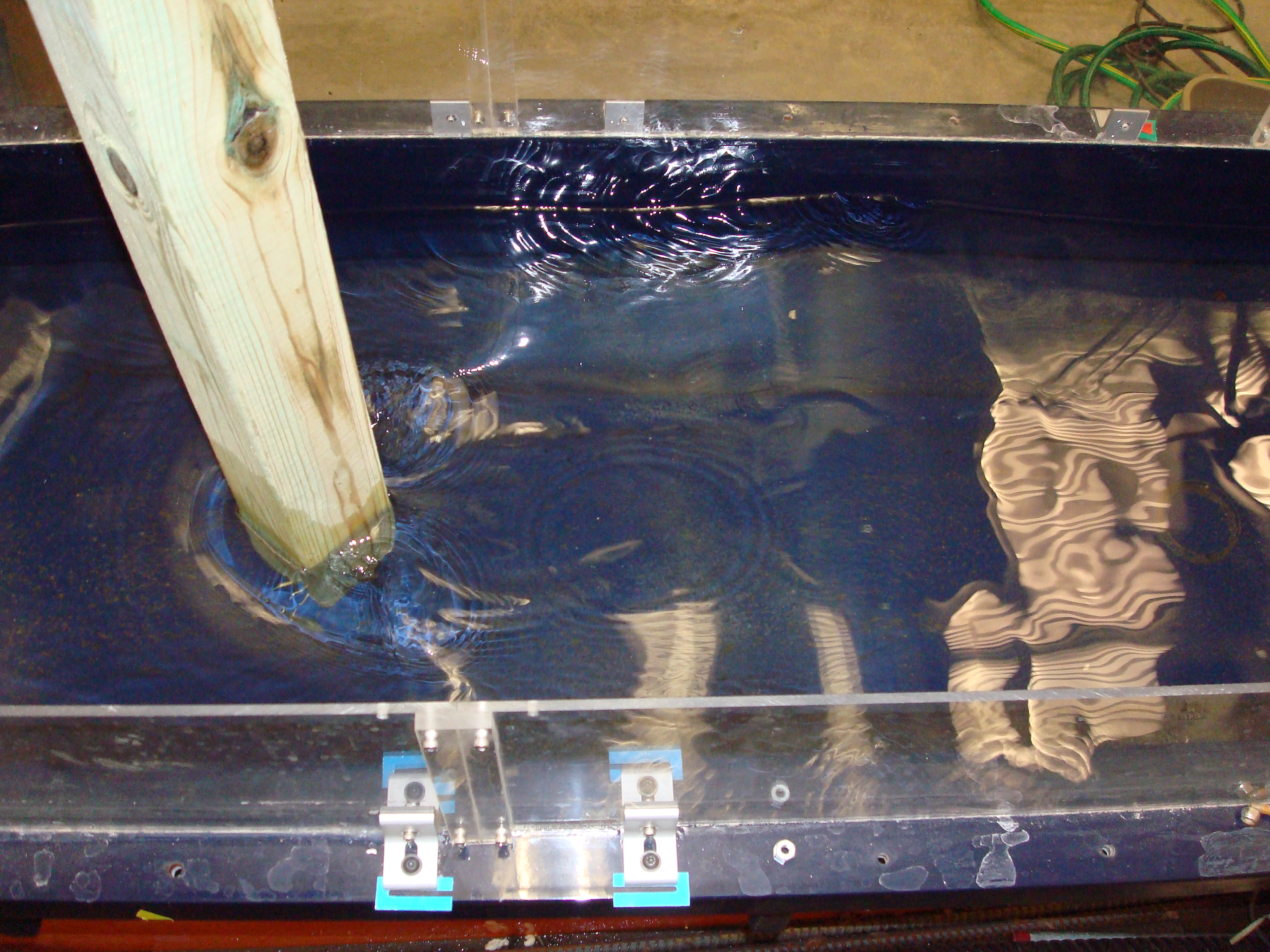
4x4
inch rectangular wooden support, oblique to flow (45 degrees): 6 inch
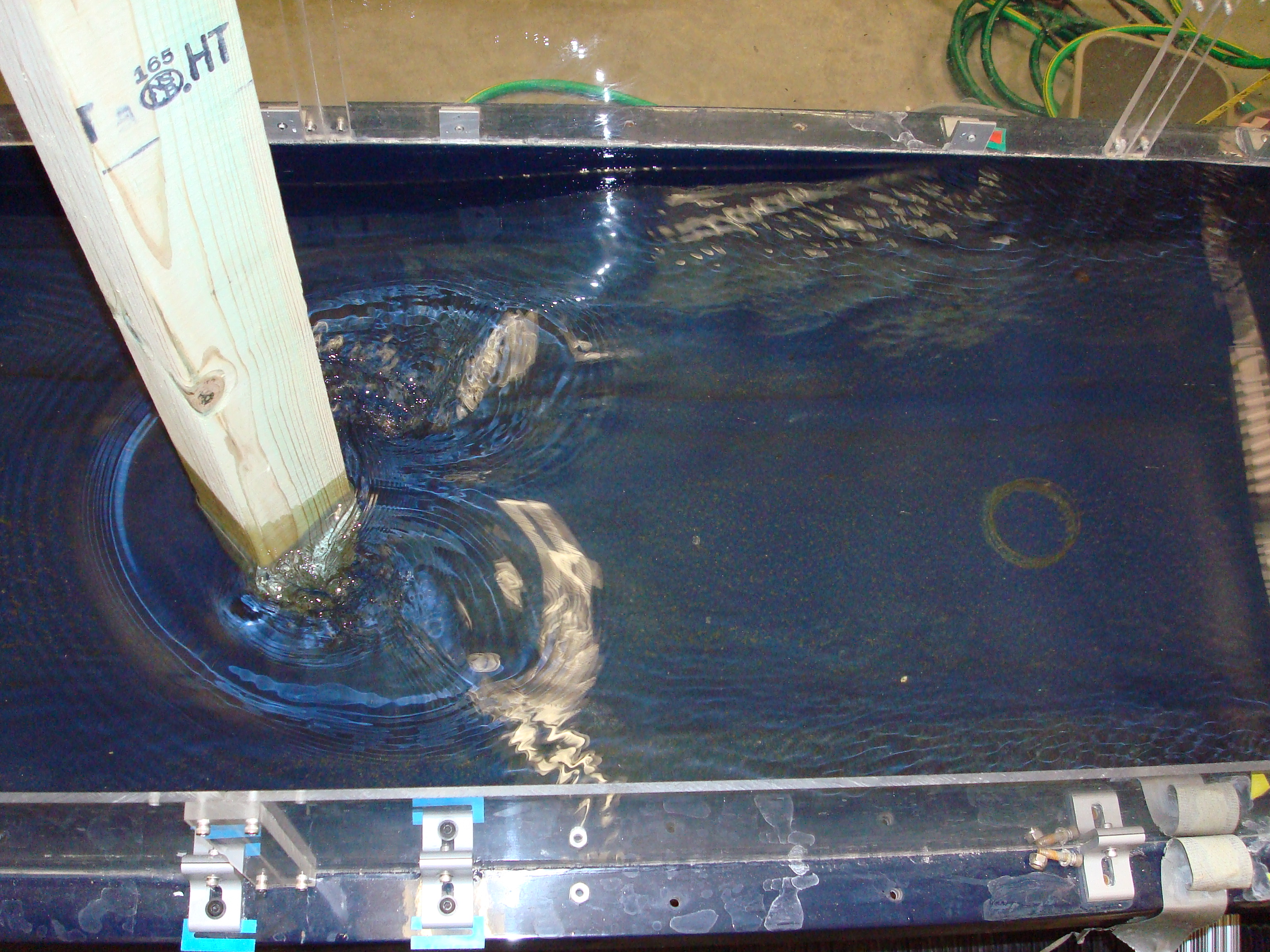
4x4
inch rectangular wooden support, orthogonal to flow: 1.5 inch
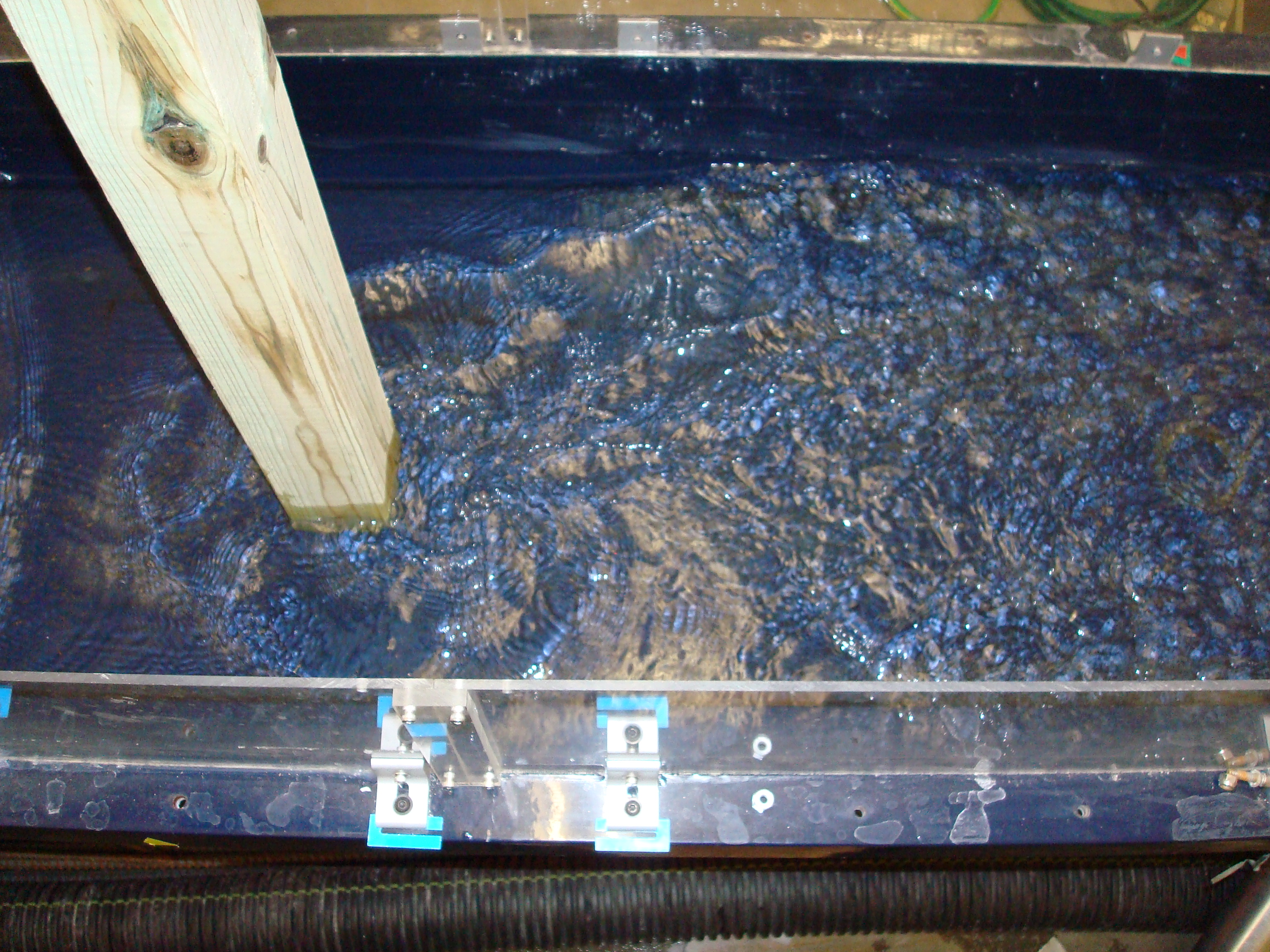
4x4
inch rectangular wooden support, orthogonal to flow: 4 inch
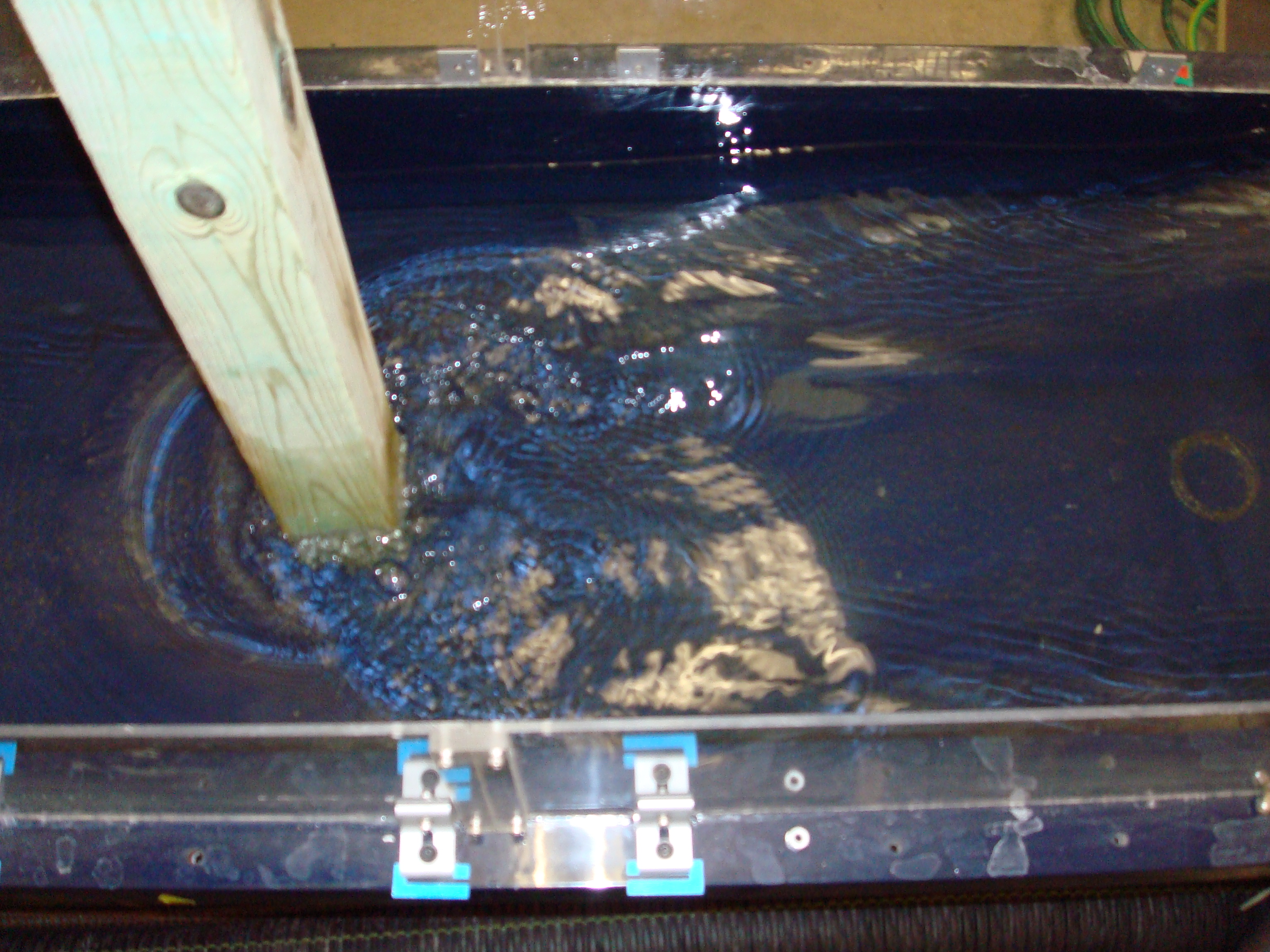
4x4
inch rectangular wooden support, orthogonal to flow: 6 inch
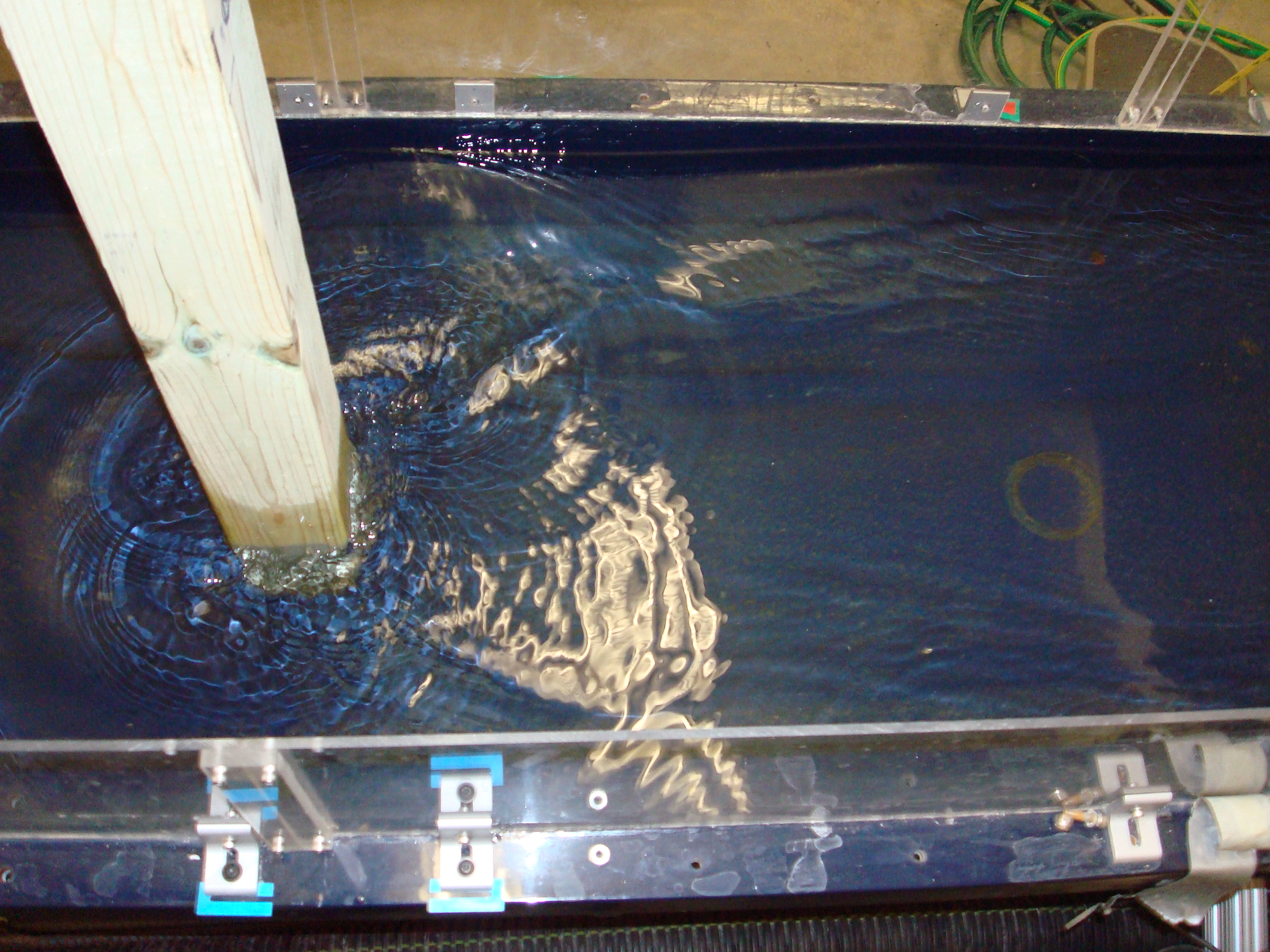
The
pictures above display a general pattern of streamlines given a certain
water depth and obstacle shape. This information gives insight on
the effects docking structures may or may not have on wave height. The
link below is a video of the open channel simulator in action.
Real
Time Observation
|